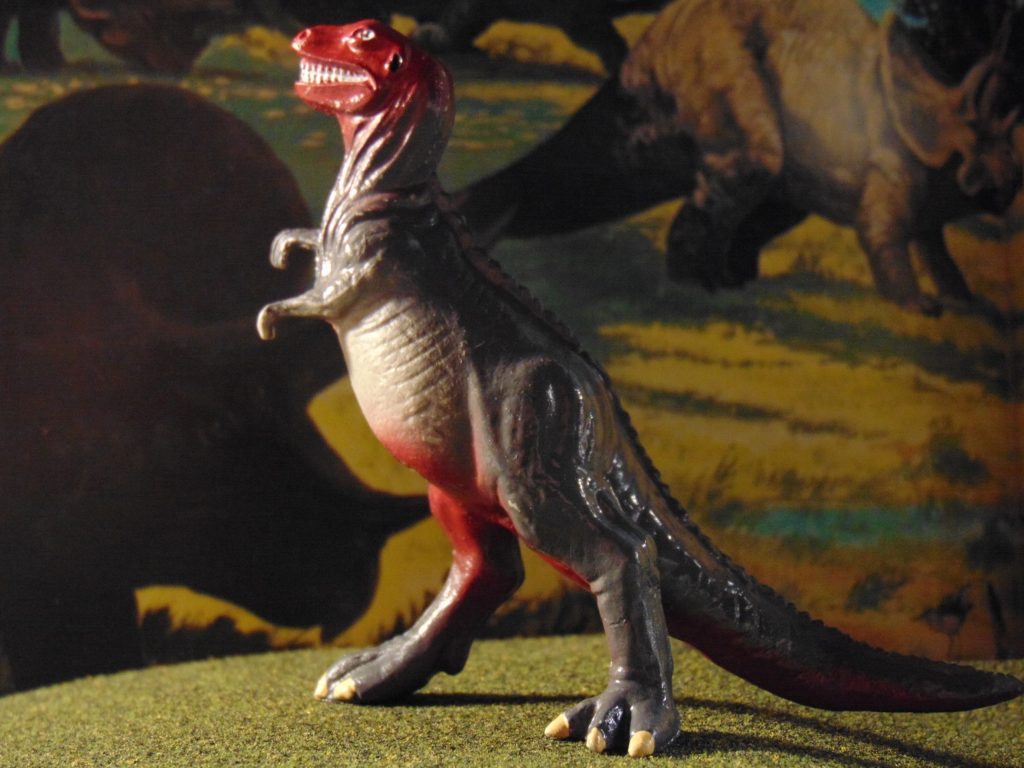
If someone came up to you and said the word dinosaur, chances are good that the first mental image you would have is of Tyrannosaurus rex. This would not be a surprise as it is an icon and the favorite dinosaur of many children and adults. But how would you picture it? Would it be full of feathers, full of scales, or a copy from the Jurassic Park franchise?
When I was a small child, the T. rex in my dreams and fantasies was a scaly, towering hulk, with its head staring down on me from way up high. Its mouth would be open and showing off its complement of sharp teeth with saliva dripping down its jaw. On its thick body were the small arms twitching uselessly. Its powerful legs sending up a cloud of dust after every loud crash with its tail dragging on the ground behind it. It wasn’t the agile dynamic predator that held its tail in a horizontal frame as we now know it to be but it was still awesome. Between its original description in 1905 and the early 1970s, popular illustrations of this dinosaur show it in a relatively erect posture, with its head held up and tail down, usually dragging on the ground.
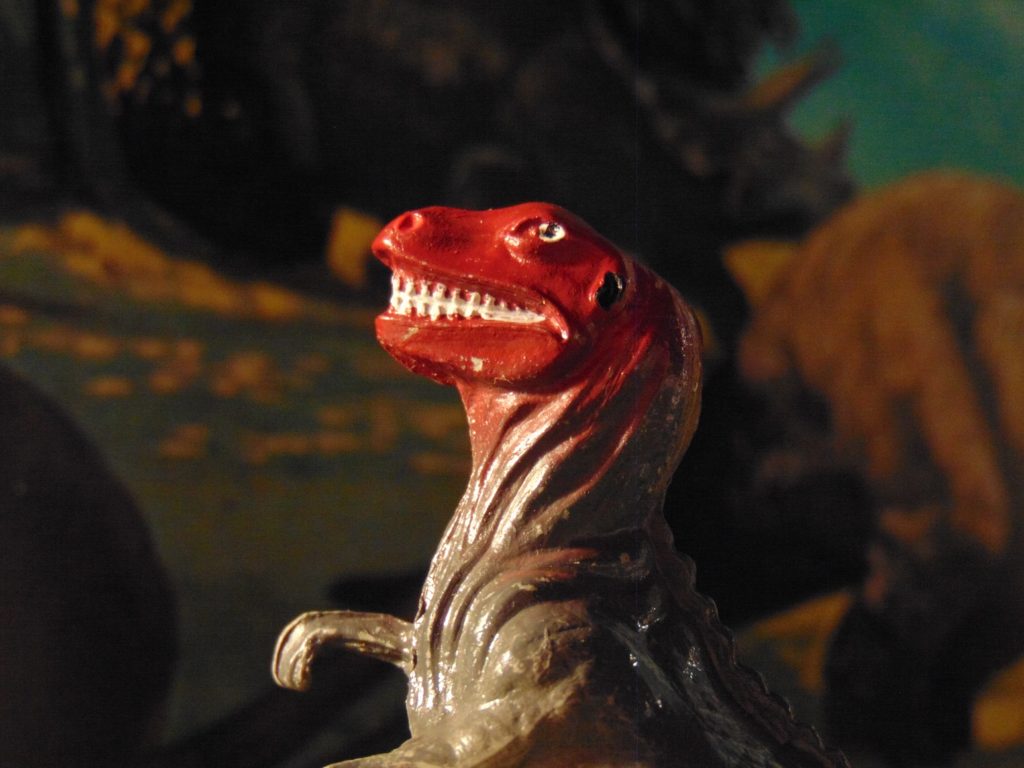
The 1969 Starlux Tyrannosaurus rex is from those olden days but it is still your favorite king carnivore as it has lots of old school charm and interesting colors.
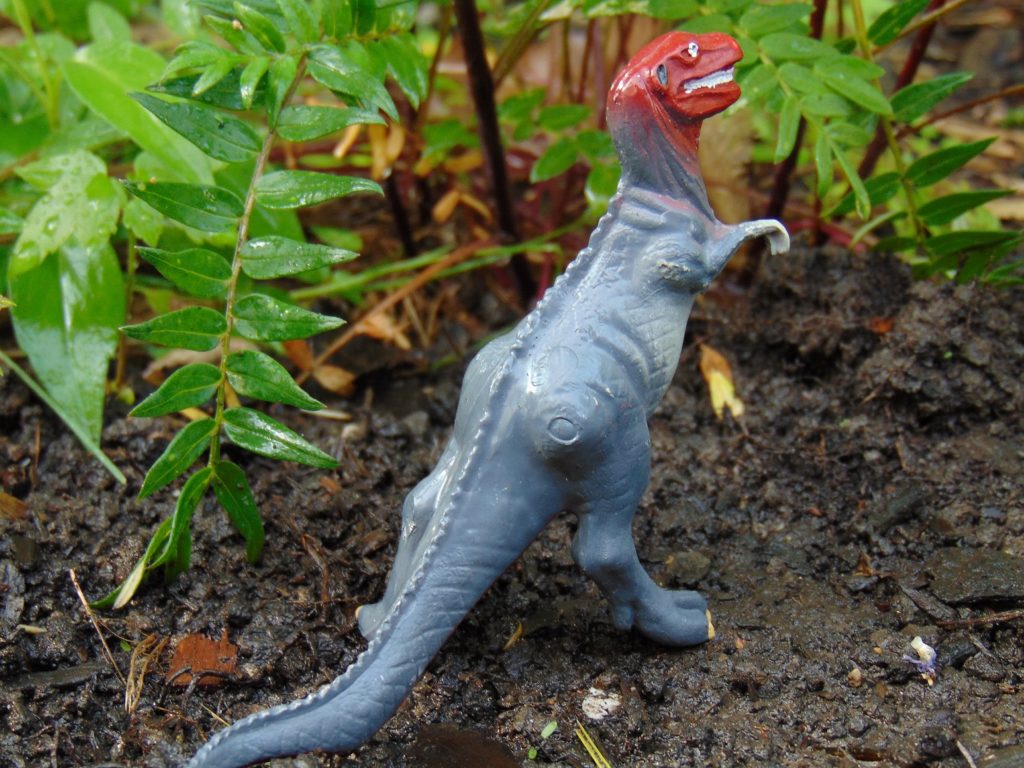
It is made of hard brittle plastic and measures 3 and 7/16th inches (8.73 cm) long and 3.14 inches (8cm) high. The classic early -mid 20th century paleoart pose is on full display. Its head is held high looking towards the heavens while its mouth is closed but with a menacing snarl that shows off its complement of gleaming white teeth. There are external nares at the end of its snout but are left unpainted. Unfortunately the head shape is generic predatory dinosaur head. The white eyes with black pupil are painted on just below the postorbital bump and black ear holes are located at the back of the skull.
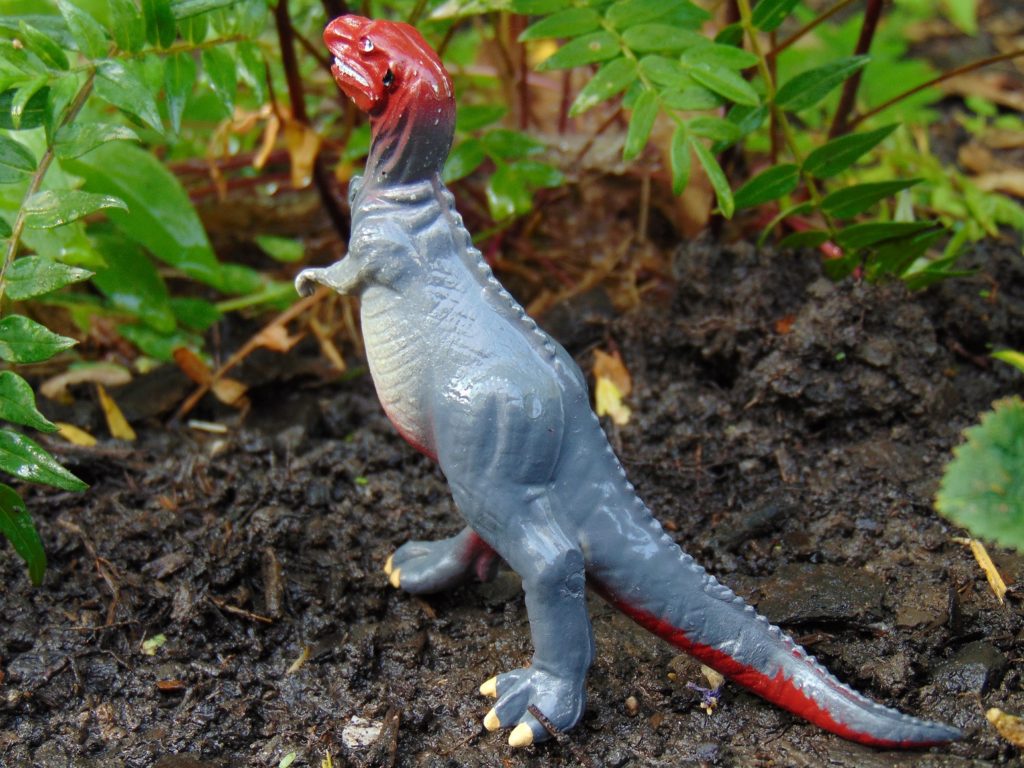
From the side the neck is looks thick and has skin folds forming bulges under the head. Along the back is a small ridge that runs all the way to the tip of the tail. Along the body and tail is textured with chain link pattern scales. The arms are at two different heights and are pronated. There are some small muscle bulges in the shoulders and hips. The right leg is forward and left leg back with the tail is dragging behind.
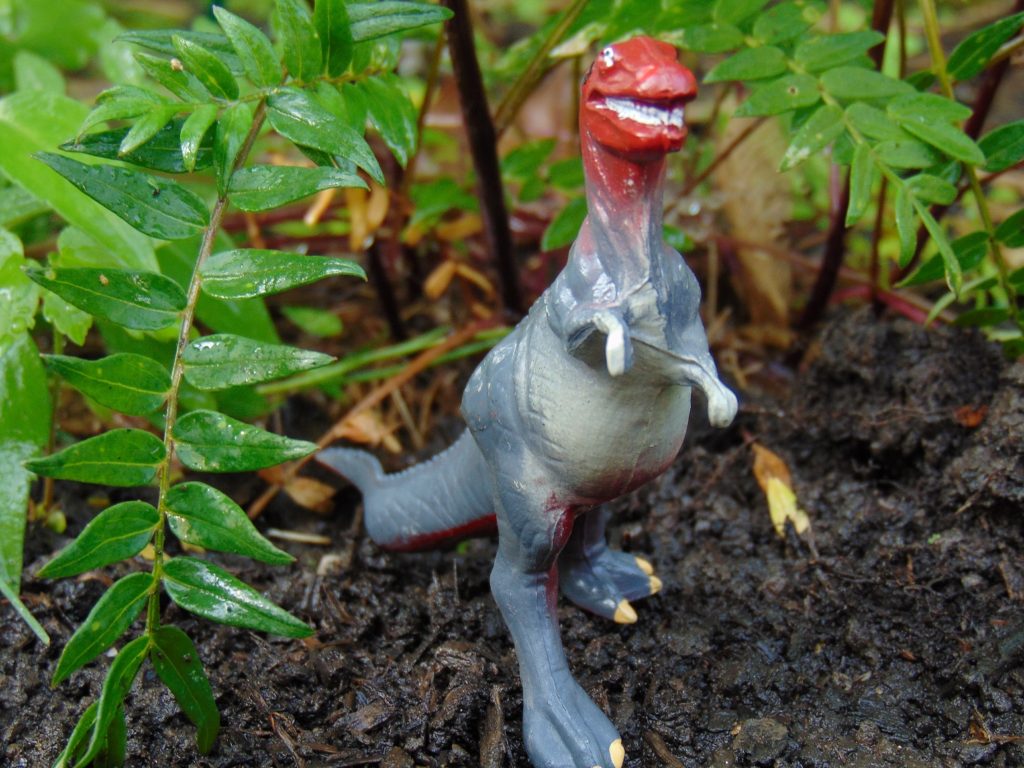
The paint job is mostly red and grey. It is sloppily applied which is typical of Starlux. The head is blood red and so is the lower half of the belly and the underside of tail. The rest of the body is either dark or light grey. The toe claws are cream in color.
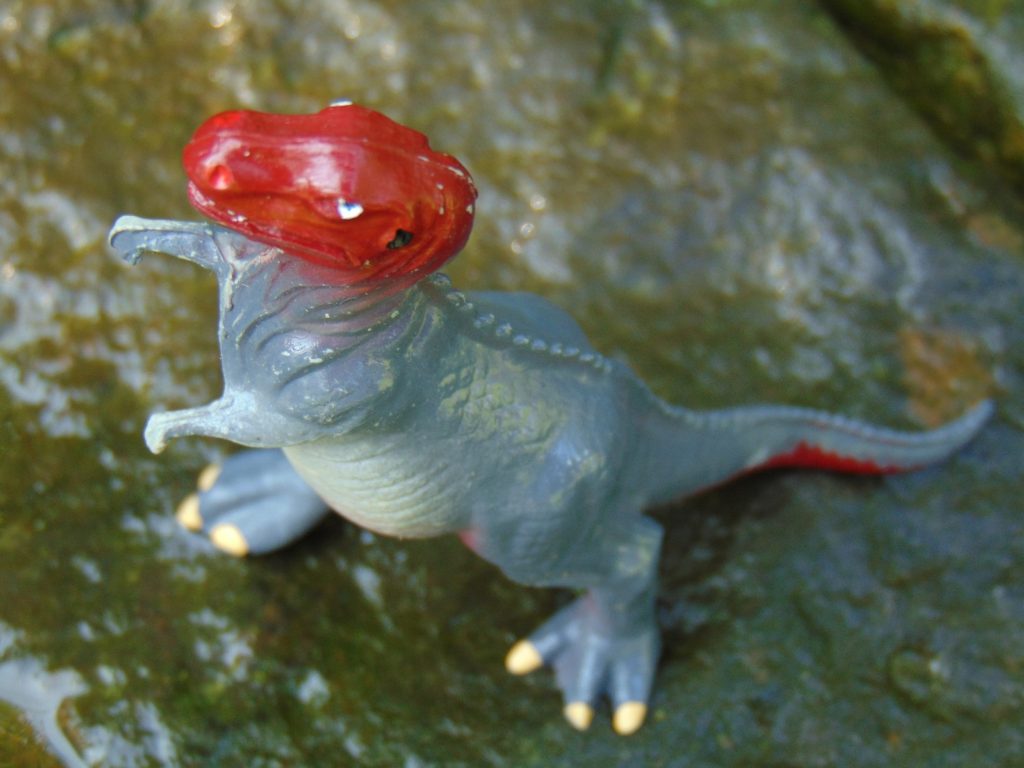
Depending on your views, this toy could be considered anywhere from really goofy looking to vintage paleoart. I prefer the latter point of view but fully understand reservations that a person might have of this fully outdated toy. I would not recommend this toy for young kids as the plastic is brittle and can break very easy. If you enjoy classic looking dinosaurs then this might be worth finding. Starlux dinosaurs can be found on e-bay from time to time as well as some other sites like figurenschnapp.
Disclaimer: links to Ebay and Amazon on the DinoToyBlog are affiliate links, so we make a small commission if you use them. Thanks for supporting us!



Starlux dinosaurs are honestly not intended for children’s enjoyment. They are “retro” collection figures that deserve the protection of a showcase, they are very fragile figures like the same porcelain or even more.
In Spain in 1983 a store in Madrid was planning to market this figure but due to problems with the company Starlux, commercialization could not be consummated. In my case I had given myself illusions but they were in vain. Starlux is one of the most complete vintage companies in terms of variety of prehistoric animals.
Fine review. Whenever I see an old T. rex like this, I remind myself that I probably would have loved it as a child.